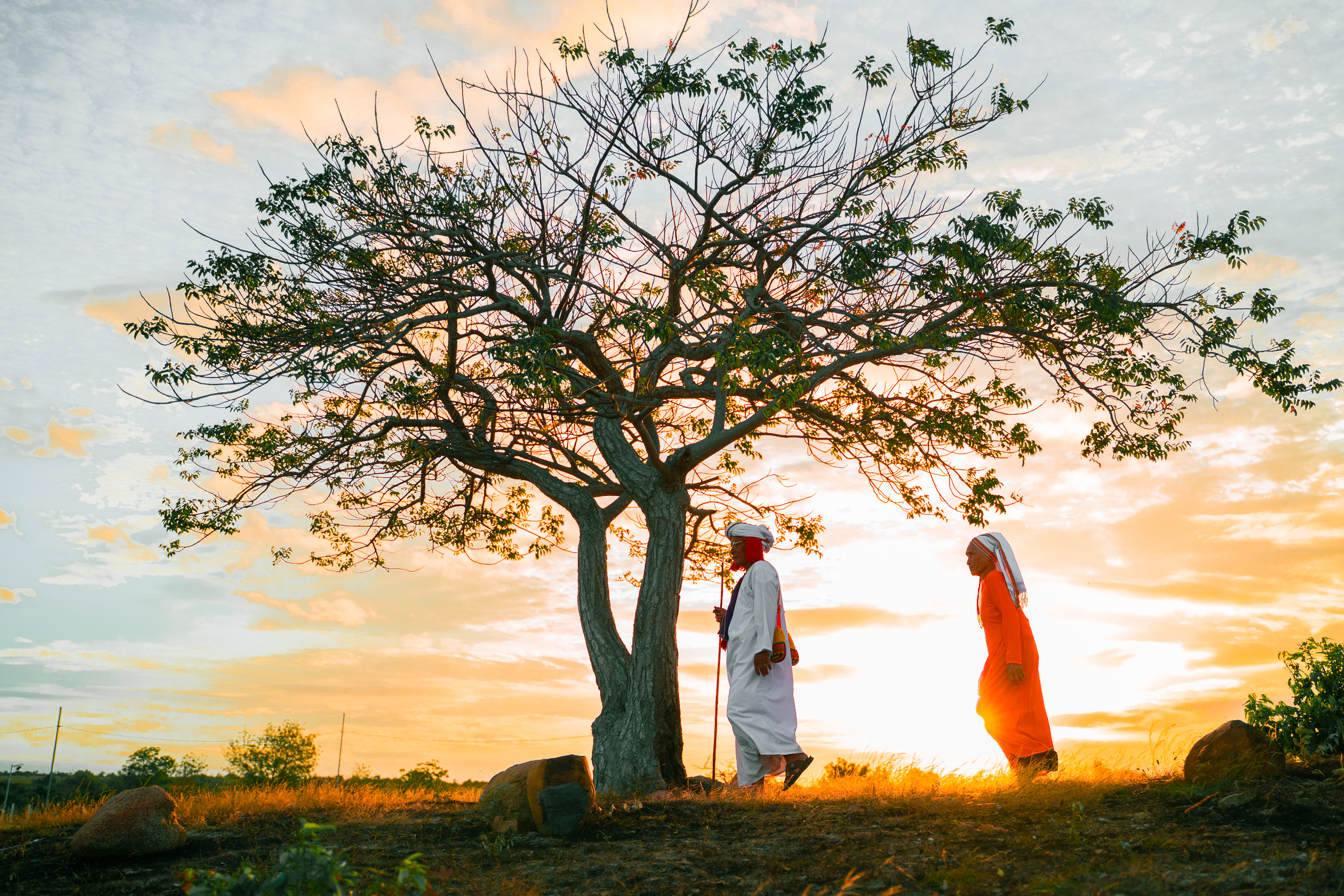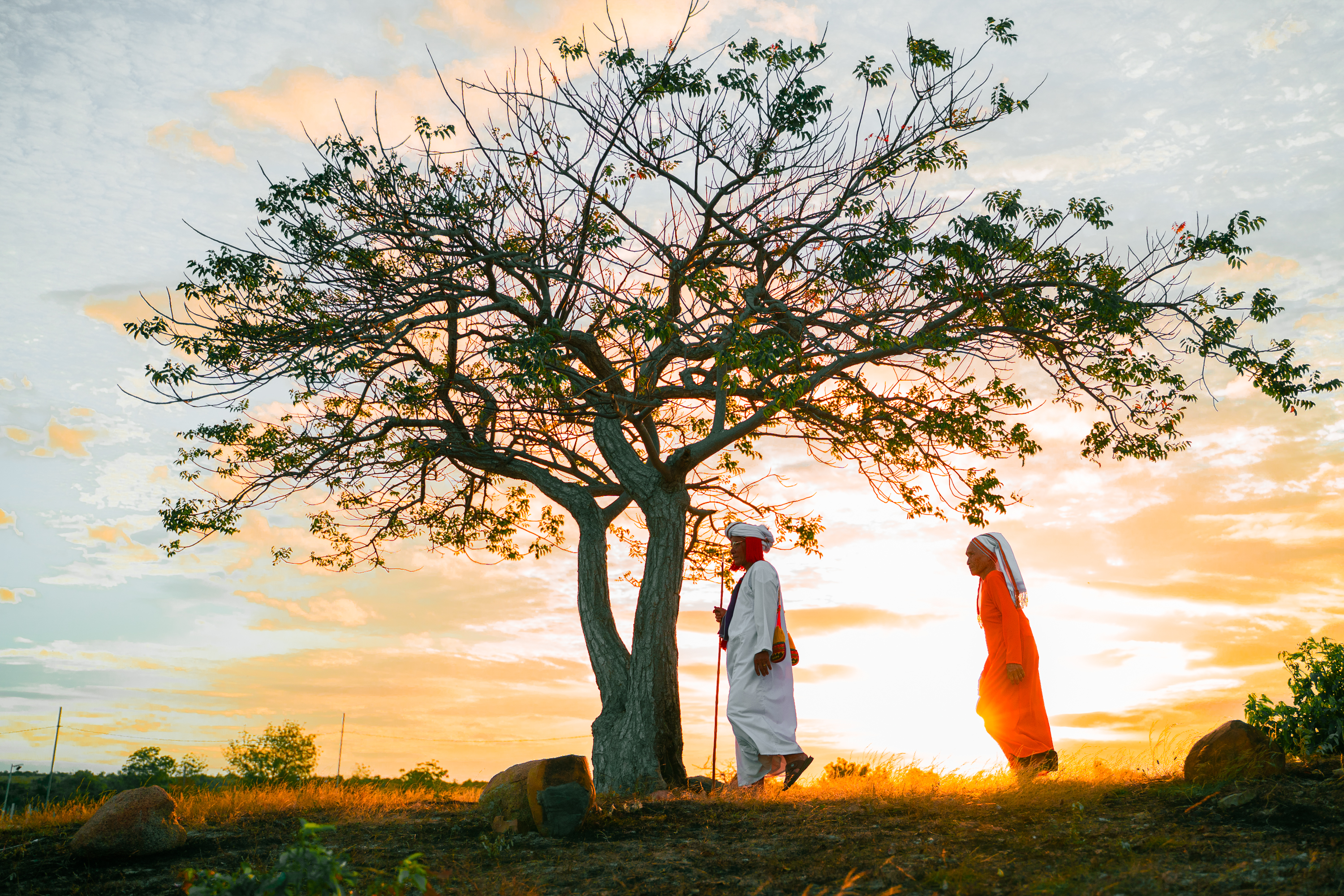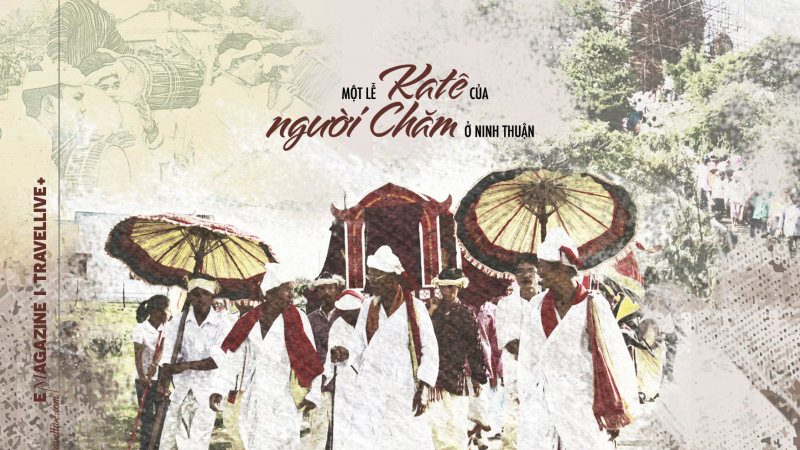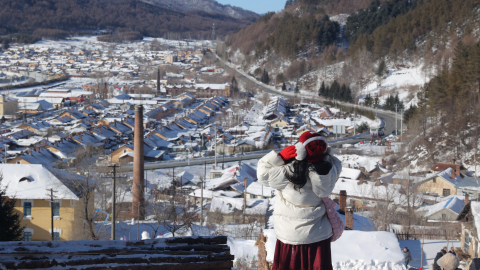In Ninh Thuan, people in traditional costumes with ao dai, skirts, and colorful scarves follow each other to the cemetery (Cham language: Nao ghur), performing the ritual of remembering their ancestors. In the middle of the vast white sand, the simple graves are marked only by two small stones at the head (north) and foot (south).
Ramưwan, derived from Ramadan (Arabic) meaning "September of the Islamic calendar", is a sacred time for the Muslim community worldwide. However, for the Cham Bani people, Ramưwan is not only a month of fasting but also a unique cultural feature, where Islamic beliefs blend with the ancestor worship of the Cham people, creating a solemn ritual rich in spiritual meaning.

Cham Bani Cemetery with simple rows of graves, where descendants gather to offer prayers and remember the deceased.
Journey back to the roots
Before Ramuwan, when the sun had not yet risen, Cham families had prepared their traditional costumes to go to the cemetery to visit the graves. The atmosphere was solemn but not gloomy, but contained a sacred connection between the living and their ancestors. Dang Thai Tai, a native of Phu Yen, witnessed this ceremony for the first time, could not hide his surprise: "The first impression was that everything from the costumes to the rituals were very strange, I had never seen such a scene. Every detail had its own meaning, associated with the beliefs and consciousness of the Cham people."
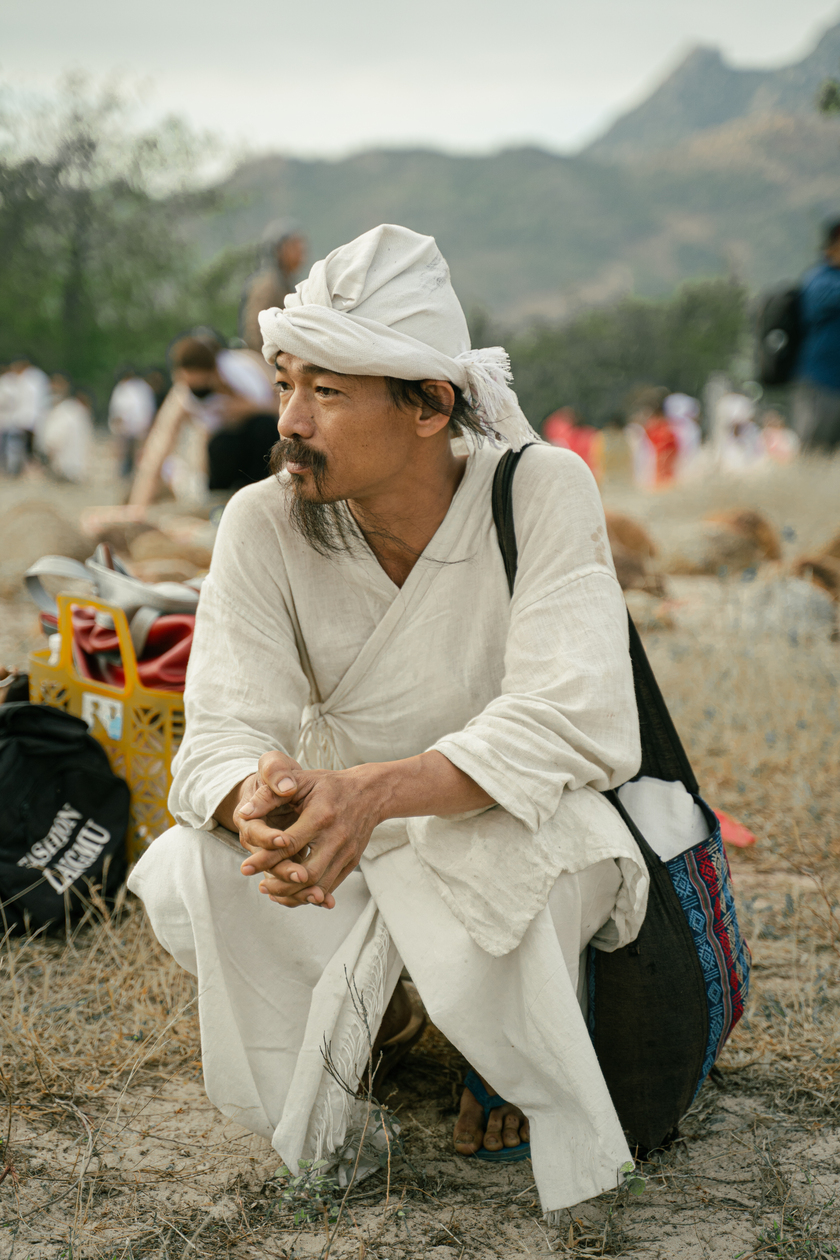
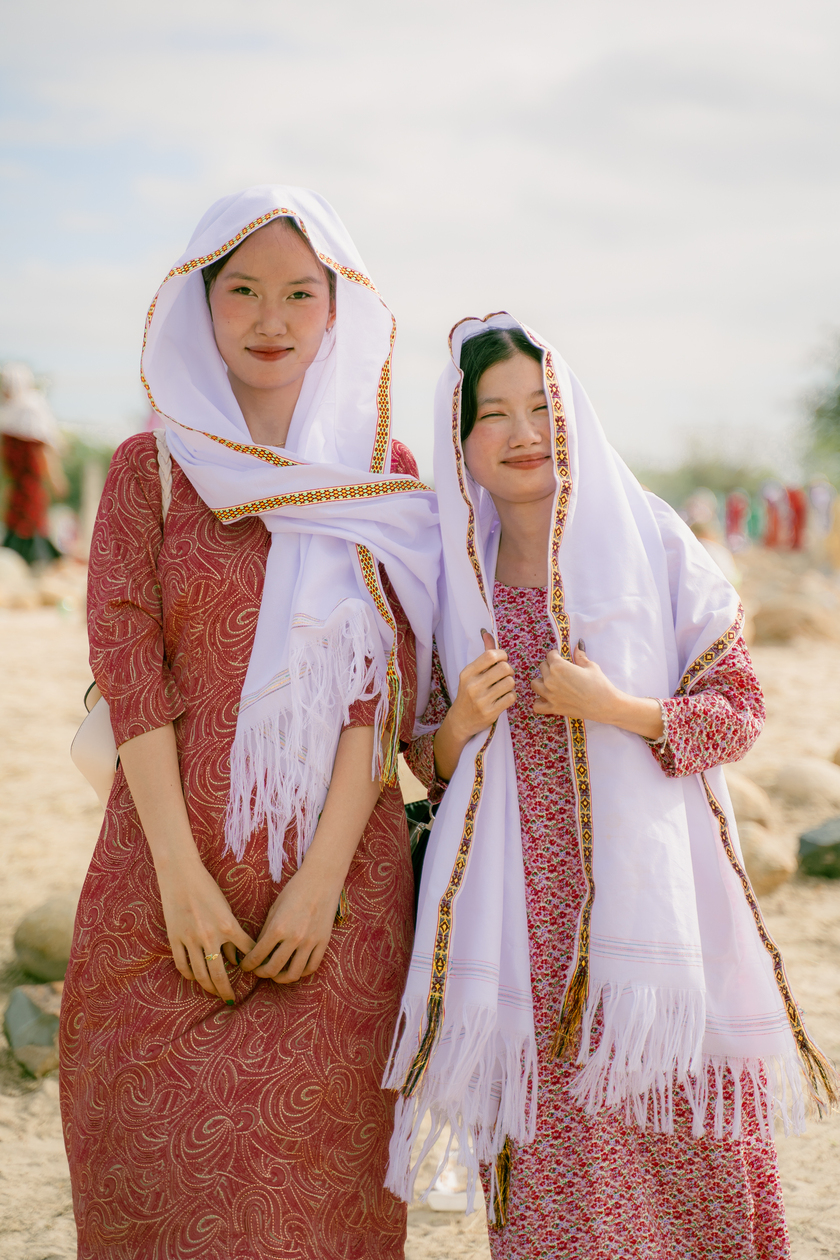
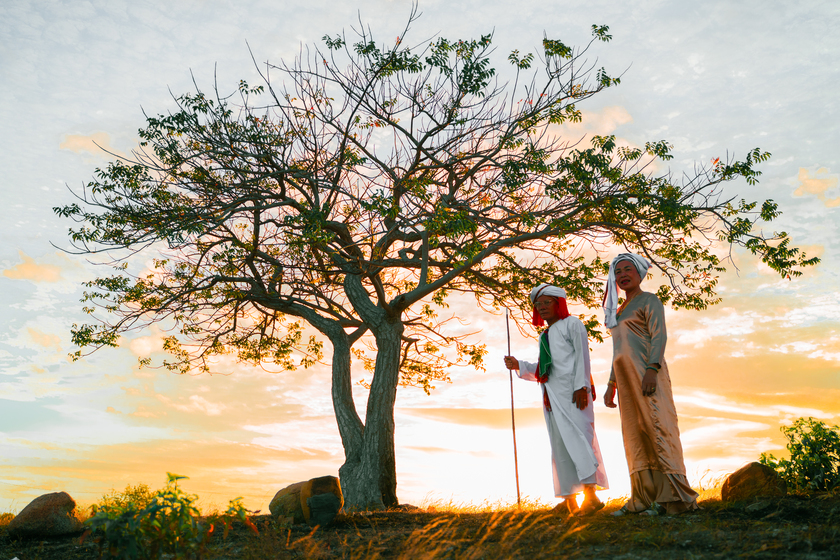
Cham people in traditional costumes with ao dai, skirts, and colorful scarves visit graves
In preparation for the ceremony, community dignitaries wore white ao dai with red borders and white scarves with red tassels on their heads. They carried bronze boxes containing betel and areca nuts, tobacco, holy water and incense, indispensable offerings in the ceremony. Family members, from children to the elderly, all wore the most beautiful and newest traditional costumes, expressing their respect to their ancestors.
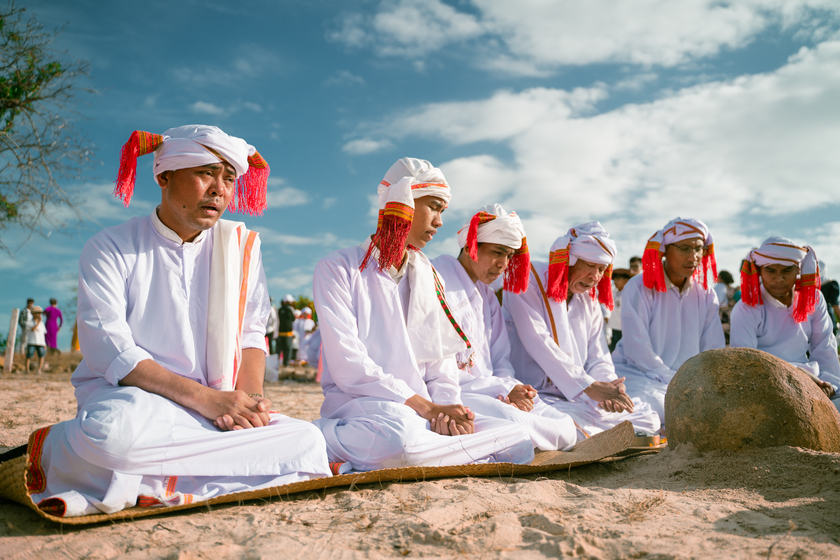
Community dignitaries wear white ao dai with red borders and white scarves with red tassels on their heads.
Tomb Sweeping Ceremony: When descendants turn to their ancestors
The Cham Bani cemetery does not have the usual tall, massive tombs, but only round stones arranged neatly in long rows. On this day, each clan will come here to weed, hoe, and clean the graves in preparation for the ceremony.
Once everything was ready, the main ceremony began. The dignitaries performed the ritual of purifying the graves with holy water, then recited prayers, inviting the ancestors to witness. The chants resounded regularly, blending into the space as a call for the ancestors to reunite with their descendants. Each person then placed prepared betel and areca nuts on each grave, then clasped their hands and bowed to the ground three times, expressing their respect and wishes for peace.
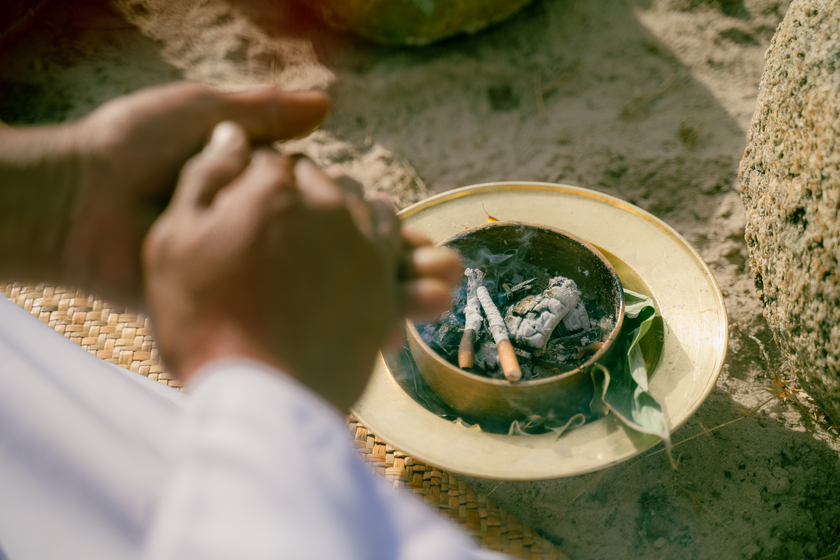
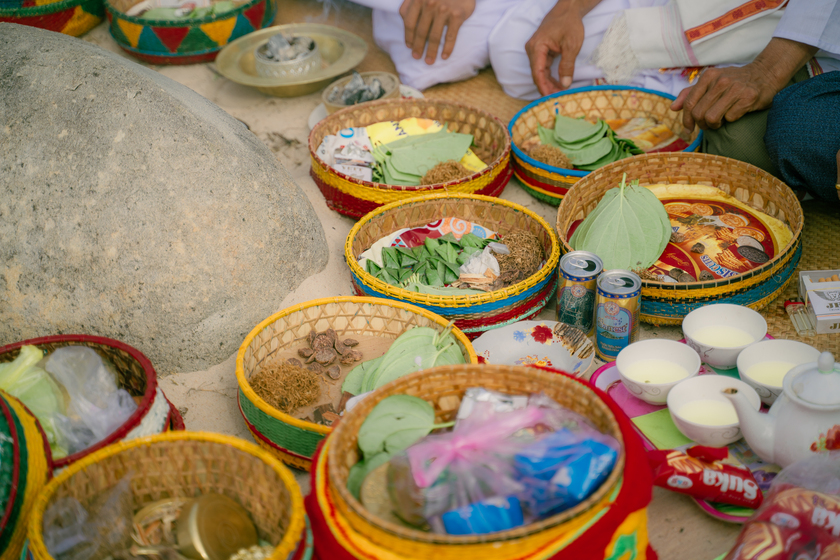
Simple offerings such as betel and areca nuts and holy water are placed on the graves, showing the descendants' devotion to their ancestors.
Mai Tram, a Cham person participating in the festival, shared: "This is a time for descendants to express their gratitude to their ancestors, and also an opportunity for the whole family to reunite and bond with each other. Everyone reads prayers together, makes a holy seal and prays to their ancestors to bless the village and the living to be peaceful and happy."
Unique features in Cham Bani rituals
Unlike many other places where simply burning incense sticks on graves is done, the Cham people’s grave-sweeping ritual has its own unique cultural color. All family members wear traditional costumes when coming to the cemetery, showing unity in beliefs and respect. In addition, reading prayers not only has spiritual meaning but also helps people remember their roots and traditional values that never fade.
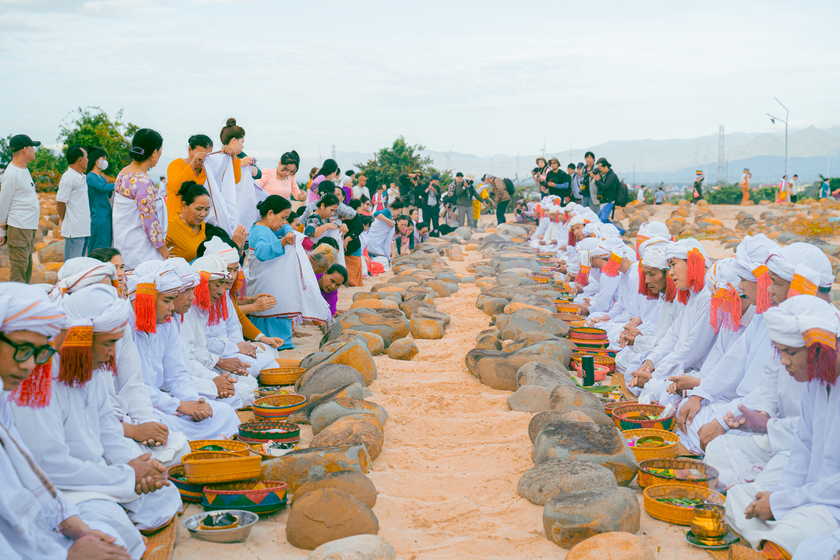
Grave worship ceremony of Cham people in Ninh Thuan
The atmosphere of the tomb-sweeping day is a mixture of solemnity and joy. Children are happy in their new clothes, happy to follow their parents to visit the graves, while adults feel at peace having fulfilled their responsibilities to their ancestors. But somewhere, there are still quiet moments, distant glances remembering the deceased.
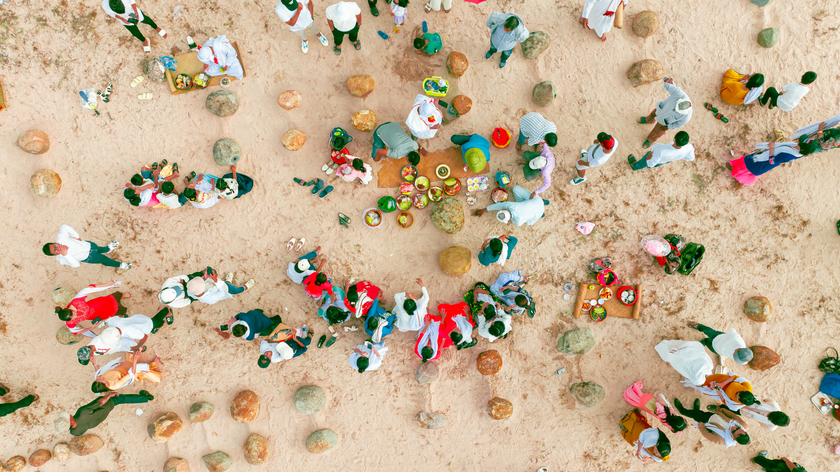
Many generations in a family gather around the ancestors' graves, creating a warm, sacred atmosphere.
The tomb sweeping ceremony is not only the ritual that begins the month of Ramawan for the Cham Bani people, but also a vivid demonstration of the spirit of family solidarity, gratitude to ancestors and preservation of traditional cultural values. It is a sacred journey where Cham people always find their roots amidst prayers, incense smoke and warm affection.





